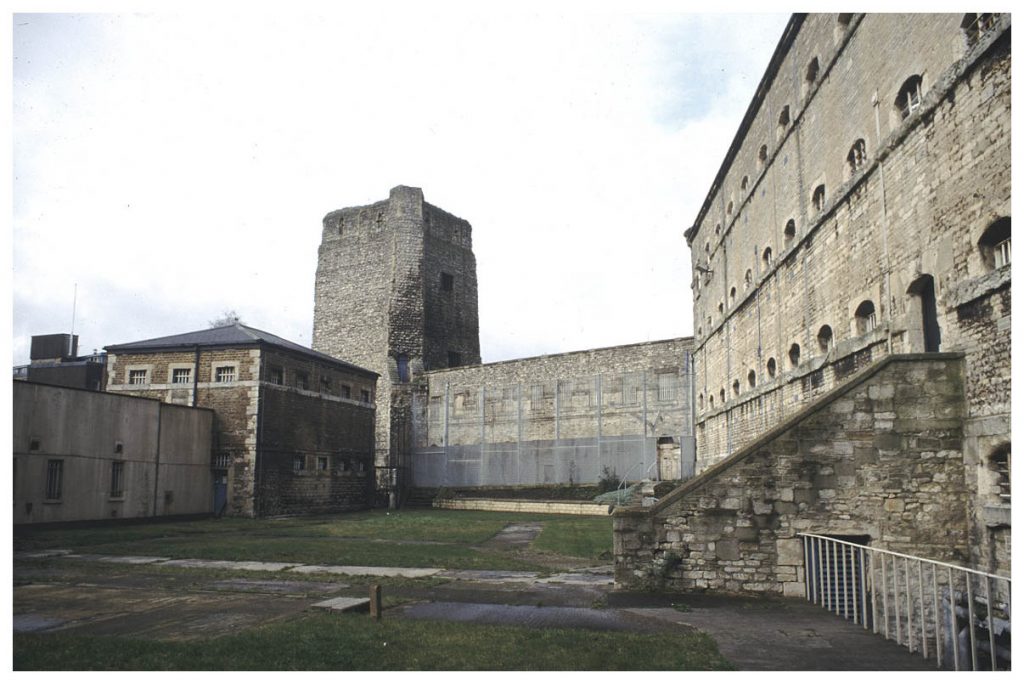 aaa
aaa

Prison escapes may be a rare, but when they do occur they often cause scandal and gain lots of media attention. We have compiled the top 10 prison escapes of all time, these are all real stories with fascinating outcomes. Enjoy!
Yoshie Shiratori is best known for escaping from prison four times in three years. After being convicted of murder, he was sentenced to life plus 23 years imprisonment.
Shiratori escaped from Aomori Prison in 1936, was recaptured and escaped from Akita Prison in 1942. In 1944, he rusted his handcuff and an inspection hole with miso soup, before escaping from Abashiri prison. He was caught again in 1946. Sapporo District Court sentenced him to death, which caused Shiratori to desperately find a way to escape and in 1947, he dug a tunnel and escaped for the fourth time!
In 1948, he was recaptured after admitting to a policeman that he was an escaped convict. His death sentence was revoked and Shiratori eventually served 26 years before being paroled in 1961.
John Herbert Dillinger Jr. was an American bank robber during the Depression era who robbed two dozen banks and four police stations during his crime spree.
He escaped from prison twice in his criminal career. During a period in jail in Indiana, Dillinger befriended a series of seasoned bank robbers who taught him to be a successful criminal. After being released at the height of the Great Depression, Dillinger immediately returned to crime.
After robbing two banks, he was captured and imprisoned in Lima in the Autumn of 1933. Dillinger used his time in jail to aid the escape of a group of inmates who he had met during his previous jail term. Inmates smuggled guns into their prison cells, which they used to escape just four days after Dillinger had been captured. The group then returned to the prison, impersonating Indiana State Prison officers and successfully released Dillinger from his cell.
After another series of bank robberies, Dillinger was captured again in 1934 and sent to Crown Point Jail. The police boasted to the media that the jail was escape proof. This proved wildly untrue when Dillinger crafted a fake pistol from a piece of wood, supposedly using shelving in his cell and a razor to carve it. Dillinger tricked a guard to open his cell and then took seventeen men hostage before luring the guards back to the cell block and locking them in his own prison cell. He then fled.
Dillinger evaded police across four states before meeting his end on 22 July 1934 when a tip-off led to a shoot-out in Chicago. Dillinger was shot three times and was pronounced dead shortly after.
Alfred George Hinds was a British criminal who successfully broke out of three high security prisons while serving a 12 year prison sentence. Hinds’ first escape was from a Nottingham prison in 1958 where he managed to get through locked doors and over a 20-foot prison wall to his freedom. This feat earned him the name ‘Houdini Hinds’ in the media.
He travelled throughout Europe during his time on the run, working as a painter-decorator before being apprehended after 248 days of freedom.
Hinds used his re-arrest to his advantage, bringing a lawsuit against the authorities and hence finding a reason to be escorted to the Law Courts.
Accomplices supplied Hinds with a padlock and attached screw eyes onto a toilet cubicle so that while being escorted to the toilet, Hinds bundled the two guards into the cubicle and locked them in. Escaping onto Fleet Street, Hinds made for the airport where he was captured five hours later.
Hinds’ third and final prison escape came less than a year later, when he escaped from Chelmsford Prison. He fled to Ireland where he lived for two years under an assumed name before being stopped driving an unregistered car and rearrested. Following his eventual release from Parkhurst Prison, Hinds became a member of Mensa.
John Gerard is the only person ever known to have escaped from the notorious Tower of London. A Jesuit priest, Gerard was imprisoned for continuing to preach his Catholic beliefs when the church was under heavy persecution from Elizabethan England.
During his imprisonment, he endured several interrogations, often being tortured for information. He never broke, but was eventually sentenced to death for his “crimes”. Desperate to escape, Gerard communicated with allies on the outside via smuggled notes written in invisible ink made from orange juice.
These allies rowed a boat into the Tower’s moat and Gerard was able to escape by using a rope thrown up to him. Cheating death after almost falling because of his tortured hands, Gerard managed to climb down to the boat, flee England and live the rest of his life in Rome.
A group of prisoners, dubbed the Texas Seven escaped from the John B. Connally Unit on 13 December 2000. An elaborate scheme devised by the group led to the group overpowering and restraining 16 people, including supervisors, officers and three uninvolved inmates.
Once overpowered, clothing, credit cards and ID were taken from the victims and used to impersonate civilians at the back gate of the prison. Four of the offenders stayed behind to make phone calls to the prison tower guards to distract them. The rest raided the guard tower and stole numerous weapons and then stole a prison maintenance pick-up truck in which all seven drove away from the prison.
They were apprehended just over a month after. Six of the seven were placed on Texas’ Death Row while the seventh (Larry James Harper) committed suicide rather than return to prison.
In the autumn of 1142, Empress Matilda was besieged in Oxford Castle by soldiers loyal to her cousin Stephen. A battle, labelled ‘The Anarchy’, was raging across the country for the crown of England.
Stephen, grandson of William the Conqueror and Matildas’ cousin, both laid claim to the crown and took it in turns to lay siege to one another’s strongholds. The siege at Oxford Castle lasted for three months.
Matilda’s epic escape came one freezing snowy night in December, when according to legend, she wrapped herself in a white cape and fled on makeshift ice skates across the ice to Wallingford Castle. A truce was decided to end the battle, with Matilda agreeing that Stephen could keep the throne as long as her son Henry became his heir.
Suspiciously, Stephen died not long after this agreement was forged, allowing King Henry II to take the throne. You can discover more about Empress Matilda and more incredible stories on Facebook, Instagram and our blog!
In June 1962, three prisoners of the notorious Alcatraz Island escaped and mysteriously went missing. A plot devised by fellow prison Allen West saw Frank Morris, John Anglin and his brother Clarence spending two years digging an escape route through the cell walls and building a raft to sail to freedom.
Dummies were placed in the three prisoners’ beds to fool the prison guards so it was not until the following morning that the guards discovered they had gone.
Parts of the raft and life preservers were later found in the bay along with some of the prisoners’ personal effects, leading investigators to conclude that the men had drowned.
The FBI officially closed the case on 31 December 1979, concluding that “no credible evidence emerged to suggest the men were still alive”. However, no bodies were ever discovered.
Ronald Arthur Biggs, more commonly known as Ronnie Biggs, is infamous for his role in the Great Train Robbery of 1963, and for his 36 years living as a fugitive until his voluntary ‘surrender’ in 2001.
Initially captured and sent to prison for his part in the Great Train Robbery, Biggs only served 19 months of his prison sentence before escaping from Wandsworth Prison on 8 July 1965 by scaling a wall with a rope ladder and dropping on to a waiting van.
He fled to Brussels via boat and then onto Paris where he acquired a new identity and underwent plastic surgery. His 36 years on the run were spent predominantly in Australia and Brazil. On 7 May 2001, Ronnie voluntarily returned to the UK and was immediately arrested and imprisoned. He served 8 years in jail before being released on compassionate grounds in 2009. He died in December 2013.
HM Prison Maze was the location of the biggest prison escape in British history, when on 25 September 1983, 38 IRA prisoners smashed their way out of the maximum security prison, widely considered to be one of the most escape-proof prisons in Europe.
Fifteen foot fences and Eighteen foot thick concrete walls topped with barbed wire encircled H-Block, and solid steel doors barred all exits from the prison complex.
Prisoners planned the escape over several months. Two accomplices, Bobby Storey and Gerry Kelly, started work as orderlies to identify weaknesses in the system and six handguns were smuggled into the prison by exploiting these downfalls. Just after 2.30pm, prisoners seized control by simultaneously taking the prison officers hostage, and hijacking a lorry which was delivering food to the block.
Officers in the gatehouse were also taken hostage and after several attempts, the main gate was opened. Abandoning the lorry after a makeshift road block was set up by two cars just outside the prison, the prisoners escaped over a fence. The prison was made secure by 4.18pm minus 38 prisoners. Twenty prison officers were injured and one died after suffering a heart attack during the escape.
Devised by Squadron Leader Roger Bushell in the Spring of 1943, the ‘Great Escape’ from prisoner of war camp Stalag Luft III occurred on the night of 24 March 1944.
Bushell was in command of the Escape Committee in the North compound, where the British airmen were housed. His ‘Great Escape’ plan involved the building of three “bloody deep, bloody long tunnels” underneath the camp fences. The tunnels were nicknamed Tom, Dick and Harry. If one of the tunnels was discovered by the Germans, it was presumed that they would never suspect two more might be underway.
More than 600 prisoners were involved in the tunnels’ construction, with Bushell aiming to get 200 prisoners to freedom. The tunnels descended 30 feet below the surface and were only 2 foot square. The walls were shored up with pieces of wood which were mainly scavenged from the prisoners’ beds.
The prisoners were very inventive with their scavenged items. Tin cans became scoops and candle holders; candles were fashioned from the fat off the top of soup served in the camp whilst wicks were created from old clothing. The sand dug out of the tunnels was discreetly scattered while the prisoners walked around the camp.
The 200 potential escapees were divided into two groups. The first group of 100, called “serial offenders”, were guaranteed a place and included prisoners who spoke German well or had a history of escapes. 70 of the men were chosen because they were considered to have contributed most to the tunnels. The second group was chosen by drawing lots.
On Friday 24 March, the escape attempt began. At 10.30pm, the first man out emerged and discovered the tunnel had come up short. Rather than reaching into a nearby forest, the tunnel came out just short of the tree line and perilously close to a guard tower. Even so, 76 men crawled through the tunnel to freedom before the 77th was spotted by the guards at 4.55am on 25th March.
Of 76 initial escapees, 73 were recaptured. Hitler order half of the escapees to be executed as an example.
Step inside and do 1,000 years of time at Oxford Castle & Prison. Book your tickets now: https://bookings.oxfordcastleandprison.co.uk/book

| Cookie | Duration | Description |
|---|---|---|
| cookielawinfo-checkbox-advertisement | 1 year | Set by the GDPR Cookie Consent plugin, this cookie is used to record the user consent for the cookies in the "Advertisement" category . |
| cookielawinfo-checkbox-analytics | 11 months | This cookie is set by GDPR Cookie Consent plugin. The cookie is used to store the user consent for the cookies in the category "Analytics". |
| cookielawinfo-checkbox-functional | 11 months | The cookie is set by GDPR cookie consent to record the user consent for the cookies in the category "Functional". |
| cookielawinfo-checkbox-necessary | 11 months | This cookie is set by GDPR Cookie Consent plugin. The cookies is used to store the user consent for the cookies in the category "Necessary". |
| cookielawinfo-checkbox-others | 11 months | This cookie is set by GDPR Cookie Consent plugin. The cookie is used to store the user consent for the cookies in the category "Other. |
| cookielawinfo-checkbox-performance | 11 months | This cookie is set by GDPR Cookie Consent plugin. The cookie is used to store the user consent for the cookies in the category "Performance". |
| PHPSESSID | session | This cookie is native to PHP applications. The cookie is used to store and identify a users' unique session ID for the purpose of managing user session on the website. The cookie is a session cookies and is deleted when all the browser windows are closed. |
| viewed_cookie_policy | 11 months | The cookie is set by the GDPR Cookie Consent plugin and is used to store whether or not user has consented to the use of cookies. It does not store any personal data. |
| Cookie | Duration | Description |
|---|---|---|
| _ga | 2 years | The _ga cookie, installed by Google Analytics, calculates visitor, session and campaign data and also keeps track of site usage for the site's analytics report. The cookie stores information anonymously and assigns a randomly generated number to recognize unique visitors. |
| _gat_UA-9822230-4 | 1 minute | A variation of the _gat cookie set by Google Analytics and Google Tag Manager to allow website owners to track visitor behaviour and measure site performance. The pattern element in the name contains the unique identity number of the account or website it relates to. |
| _gcl_au | 3 months | Provided by Google Tag Manager to experiment advertisement efficiency of websites using their services. |
| _gid | 1 day | Installed by Google Analytics, _gid cookie stores information on how visitors use a website, while also creating an analytics report of the website's performance. Some of the data that are collected include the number of visitors, their source, and the pages they visit anonymously. |
| CONSENT | 2 years | YouTube sets this cookie via embedded youtube-videos and registers anonymous statistical data. |
| Cookie | Duration | Description |
|---|---|---|
| _fbp | 3 months | This cookie is set by Facebook to display advertisements when either on Facebook or on a digital platform powered by Facebook advertising, after visiting the website. |
| fr | 3 months | Facebook sets this cookie to show relevant advertisements to users by tracking user behaviour across the web, on sites that have Facebook pixel or Facebook social plugin. |
| test_cookie | 15 minutes | The test_cookie is set by doubleclick.net and is used to determine if the user's browser supports cookies. |
| VISITOR_INFO1_LIVE | 5 months 27 days | A cookie set by YouTube to measure bandwidth that determines whether the user gets the new or old player interface. |
| YSC | session | YSC cookie is set by Youtube and is used to track the views of embedded videos on Youtube pages. |
| yt-remote-connected-devices | never | YouTube sets this cookie to store the video preferences of the user using embedded YouTube video. |
| yt-remote-device-id | never | YouTube sets this cookie to store the video preferences of the user using embedded YouTube video. |